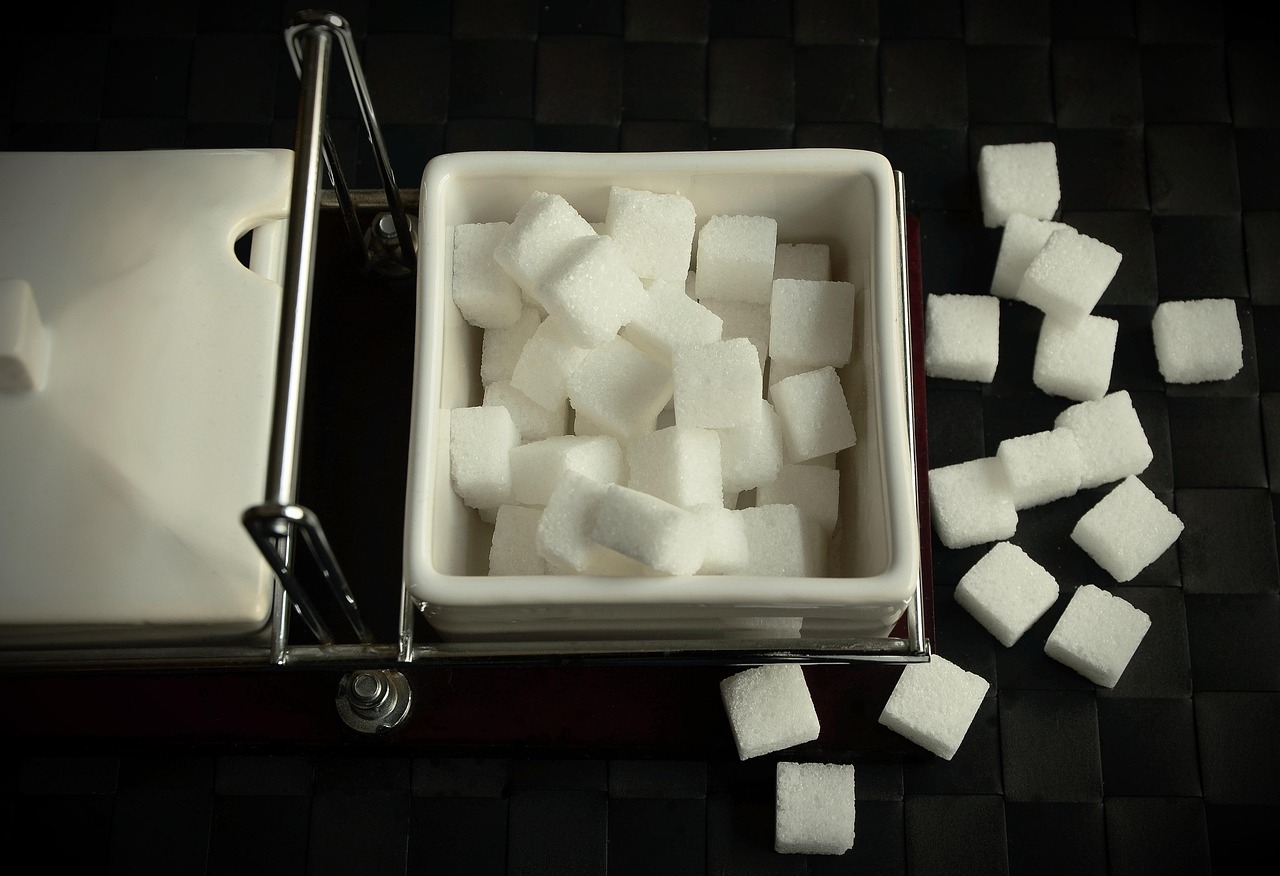Learning how to reduce sugar intake naturally sounds simple – until you try it. I know, because I’ve been there. For most people, the idea of giving up sugar completely feels impossible (and honestly, unnecessary).
The truth is, you don’t have to quit sugar cold turkey to feel better, have more energy, and protect your health. Science shows that making small, sustainable changes is the smartest way to eat less sugar without feeling deprived – and to avoid those frustrating rebound cravings that make most “no sugar” diets fail.
This article explores science-backed habits that actually work, why deprivation usually fails, and how to make tweaks that last.
If you’re wondering why it’s so important to cut added sugar, science has a lot to say. From heart health to mood and energy levels, reducing sugar has benefits that go far beyond weight management.
Why Cutting Back on Sugar Matters: The Science of Health Risks
It’s not just about weight gain – decades of research show that excess sugar intake harms nearly every system in the body. Here are some of the strongest findings:
Heart Disease Risk
A large cohort study published in JAMA Internal Medicine found that people who got 17–21% of their calories from added sugar had a 38% higher risk of dying from cardiovascular disease compared to those who consumed less than 10%.
Type 2 Diabetes
A 2013 analysis across 175 countries found that each 150 kcal increase in daily sugar availability (about one soda) was linked to a 1.1% rise in diabetes prevalence, independent of obesity rates.
These findings highlight why learning how to reduce added sugar for better health isn’t just about dieting — it’s about long-term prevention of chronic diseases that affect millions of adults worldwide.
Liver Health
Research shows high sugar intake, especially from fructose in sugary drinks, promotes non-alcoholic fatty liver disease (NAFLD), which can progress to liver damage. Consuming a lot of sugar also leads to insulin resistance.
Dental Health
The link between sugar and cavities is undeniable. A study showed that lowering free sugar intake to less than 10% of daily calories significantly reduces the risk of dental caries. World Health Organization (WHO) and other health bodies recommend limiting free sugar intake to less than 10% of daily calories, with a further reduction to under 5% offering even greater dental health benefits.
Mental Health
In the Whitehall II study (Knüppel et al., 2017), men with the greatest sugar consumption from sweet foods and drinks had ~23% higher odds of developing common mental disorder over 5 years, compared to men with lower sugar intake.
Why Deprivation Diets Fail (and What Science Says to Do Instead)
Most people who try to cut down on sugar start by going cold turkey – cutting out desserts, sodas, and even natural sweeteners overnight. But research shows that quitting sugar suddenly often backfires, leading to more cravings, stress, and late-night binges.
The problem? Strict deprivation triggers cravings, stress, and relapse. Studies on dieting show that when people restrict themselves too much, they’re more likely to binge later.
Instead, researchers recommend habit-based strategies – small, consistent tweaks that train your brain and body to want less sugar over time.
A 2020 randomized controlled trial found that people who created simple substitution plans for sugary drinks (like swapping soda for water) were able to significantly reduce sugar intake without feeling deprived (Judah et al., 2020).
1. Swap, Don’t Forbid: Replace Instead of Restrict
The fastest way to cut back on sugar without feeling deprived is to replace, not erase.
- Instead of banning soda, swap it with sparkling water + lemon or unsweetened iced tea.
- Replace candy with a piece of fruit + protein (apple slices with nut butter).
- Try baking recipes that use spices (cinnamon, vanilla, nutmeg) to enhance sweetness without extra sugar.
That same RCT mentioned above showed that when participants planned a swap (e.g., “If I’m at lunch, I’ll choose water instead of soda”), they stuck to it far better than those who just tried to “use willpower” (Judah et al., 2020).
2. Use “If–Then” Planning (Implementation Intentions)
Willpower alone rarely works.Or it might work – but for a short period of time.
But there is a workaround. Backed by science!
Instead, psychology suggests using implementation intentions – a type of mental “if–then” script.
Example:
- If I go to a café, then I’ll order tea instead of a frappuccino.
- If I crave dessert after dinner, then I’ll eat fruit before deciding on sweets.
This technique, called habit planning, has been shown to help people reduce sugar consumption (Brittain et al., 2021). It makes the decision automatic – so you don’t burn mental energy fighting cravings.
3. Track Your Sugar Intake (Awareness Is Power)
One of the most effective ways to reduce sugar without feeling deprived is to track what you consume.
In a 2024 review of sugar-reduction interventions, researchers found that self-monitoring and feedback were among the most effective strategies (Moores et al., 2024).
You don’t need a fancy app. Even jotting down what you drink or eat for a week will reveal hidden sugar bombs (like flavored yogurts or “healthy” granola bars). Awareness creates motivation – not guilt.
4. Problem-Solve Before Cravings Hit
Many people fail to cut sugar because they hit unexpected obstacles. (“I was starving at work and only candy was around.”)
A review of behavior change techniques found that problem-solving strategies helped ~75% of participants reduce sugar intake (Moores et al., 2024).
Try:
- Keeping protein snacks (nuts, boiled eggs) on hand.
- Pre-packing fruit or yogurt for afternoon slumps.
- Re-stocking your kitchen with healthier options, so the high-sugar defaults aren’t within arm’s reach.
5. Leverage Social Support & Norms
Humans are social creatures. Research shows that social comparison and support boost success in reducing sugar (Moores et al., 2024).
- Try a “no soda week” challenge with friends or family.
- Join an online community focused on sugar swaps.
- Share your wins and substitutions on social media (accountability increases commitment).
When sugar reduction feels like a group effort – not a lonely struggle – you’re less likely to feel deprived.
6. Harness Digital Nudges
Technology can be your ally. A study testing a digital behavioral intervention found that participants cut back on sugary drinks with good retention and engagement (Zoellner et al., 2025).
Practical tools include:
- Habit-tracking apps with reminders
- Smart water bottles that log intake
- Browser extensions that block fast-food ads (reducing temptation cues)
Digital nudges reduce reliance on willpower and reinforce positive habits automatically.
7. Make Small, Gradual Reductions
Trying to quit sugar overnight often backfires. A long-term study with Latina mothers found that a gradual, 24-month intervention reduced ~8 grams of sugar from beverages per day (Machle et al., 2025).
That may sound small – but over months and years, even small reductions compound into meaningful health benefits (lower risk of diabetes, obesity, and heart disease).
Tip: Instead of cutting dessert entirely, try halving the sugar in recipes or ordering a small instead of a large soda. Your palate adapts surprisingly quickly.
This gradual approach is key if you’re wondering how to stop sugar cravings naturally. Over time, your taste buds reset, your blood sugar stabilizes, and those mid-afternoon energy crashes become far less frequent – all without strict dieting or feeling deprived.
8. Change Your Environment
Your environment often dictates your sugar intake more than your willpower.
- Keep sugary snacks out of sight (studies show visibility increases consumption). Frankly, here I would recommend you (from my experience) to keep them out of your house. Because, if you want a chocolate cake, you will have to dress up, go out and buy one – and you will likely want to avoid all of these, and you will choose something healthier already available in your house.
- Put fruit in a visible bowl – people naturally eat what’s easiest to access.
These small tweaks remove constant temptation and make healthier defaults automatic.
9. Don’t Just Cut Drinks – Adjust Desserts Too
Most sugar interventions focus on sugary drinks, and for good reason – sodas and juices are the #1 source of added sugar for most adults. But the same strategies apply to desserts.
- Bake with half the sugar and add cinnamon or vanilla for sweetness.
- Use dark chocolate instead of milk chocolate – lower sugar, richer flavor. I admit I prefer dark chocolate now!
- Share desserts when dining out – you enjoy the treat without the sugar overload.
Tip: Just like with drinks, the key is substitution and reduction – not elimination. Over time, your taste buds recalibrate, and foods with less sugar taste just as satisfying.
Bonus: Hidden Sugars to Watch Out For
Even if you skip desserts, added sugars hide in foods like sauces, salad dressings, flavored yogurts, and breakfast cereals. Reading nutrition labels helps you cut down on hidden sugar that quietly adds up throughout the day.
Tip: Look for ingredients ending in -ose (like glucose or fructose) or words like syrup and nectar. These are all added sugars under different names.
Cautions & Limitations
Before you dive in, a few important notes:
- Results vary. Many sugar-reduction studies focus on sugar-sweetened beverages, so while lessons apply broadly, not all findings extend to every form of sugar.
- Short vs. long term. Some interventions show strong short-term reductions, but maintaining changes long-term is harder.
- Individual needs differ. People with diabetes or metabolic conditions should work with a doctor or dietitian before making big changes.
But I implemented many of these and they worked for me. I did not eliminate sugar completely, however, I eat waaaay less than I used to!
If you’ve been wondering how to reduce sugar intake without quitting sweets completely, the answer is small, consistent changes that retrain your brain and taste buds. Whether you’re starting with your morning coffee, afternoon snack, or weekend desserts, these science-backed habits help you eat less sugar naturally – for better energy, mood, and long-term health.
Disclaimer
This article is for informational purposes only and is not a substitute for medical advice. If you have health conditions, consult a healthcare professional before making dietary changes.
Instead of a Conclusion
Cutting back on sugar doesn’t have to feel like torture. By planning swaps, using “if–then” scripts, tracking your intake, problem-solving, and leveraging social support, you can reduce sugar gradually and sustainably.
The best part? You’ll train your taste buds to prefer less sweetness – so you never feel deprived.
Whether you start with sodas, desserts, or hidden sugars in everyday foods, small, science-backed tweaks make a big difference.
Question for you: What’s one swap you could make today that would cut your sugar intake in half without making you feel deprived?
Read my other articles that will help you live a healthier, longer life:
- Scientists Reveal the Unexpected Longevity Habit That Costs Nothing
- Scientists Say This Overlooked Habit Could Add Years to Your Life
- Scientists Say People With This Mindset Are Far More Likely to Reach Age 90+
- Add Decades, Not Just Years: 8 Habits That Could Add 20–25 Years to Your Life (Backed by a Massive Study)
- Want a Longer, Happier Life? Scientists Say This 1-Hour Habit Could Be the Key
- Want to Live Longer? Studies Say These Mental Habits May Help (No Sweat Required)
- Eat Earlier, Live Longer? What a New Study Says About Breakfast Timing, Aging, and Longevity
- Simple daily habits for a healthier mind
- How to De-Clutter Your Mind, Backed by Science
- The Personality Traits That Can Help You Live Longer (and Be Happier)
- How to Build Real Self-Esteem That Lasts (Backed by Science, Not Buzzwords)
- 17 Signs You Are Happier Than You Think
- 11 Signs You Are More Intelligent Than You Think
- Things People With High Self-Esteem Rarely Do
- How to Reduce Sugar Intake Naturally
- Science-Backed Benefits of Eating Walnuts (and How Much You Should Actually Eat)
FAQ: Cutting Back on Sugar
1. What’s the easiest way to reduce sugar intake naturally?
Start small – swap sugary drinks for water or sparkling water, and replace desserts with fruit or dark chocolate. Small substitutions help you cut added sugar without feeling deprived.
2. How can I stop sugar cravings without quitting sweets completely?
Eat balanced meals with protein and fiber, use “if–then” plans (like “If I want dessert, I’ll eat fruit first”), and make gradual changes. Over time, your taste buds adjust, and cravings fade naturally.
3. What are hidden sources of sugar in everyday foods?
Watch for added sugars in sauces, salad dressings, cereals, and flavored yogurts. Anything ending in “-ose” (like fructose or sucrose) or containing “syrup” or “nectar” usually adds hidden sugar.
4. Is it OK to eat some sugar every day?
Yes – moderation is key. Most health experts and the WHO suggest limiting free sugars to less than 10% of daily calories (about 25–50 grams for most adults). Cutting back gradually is more sustainable than strict elimination.








